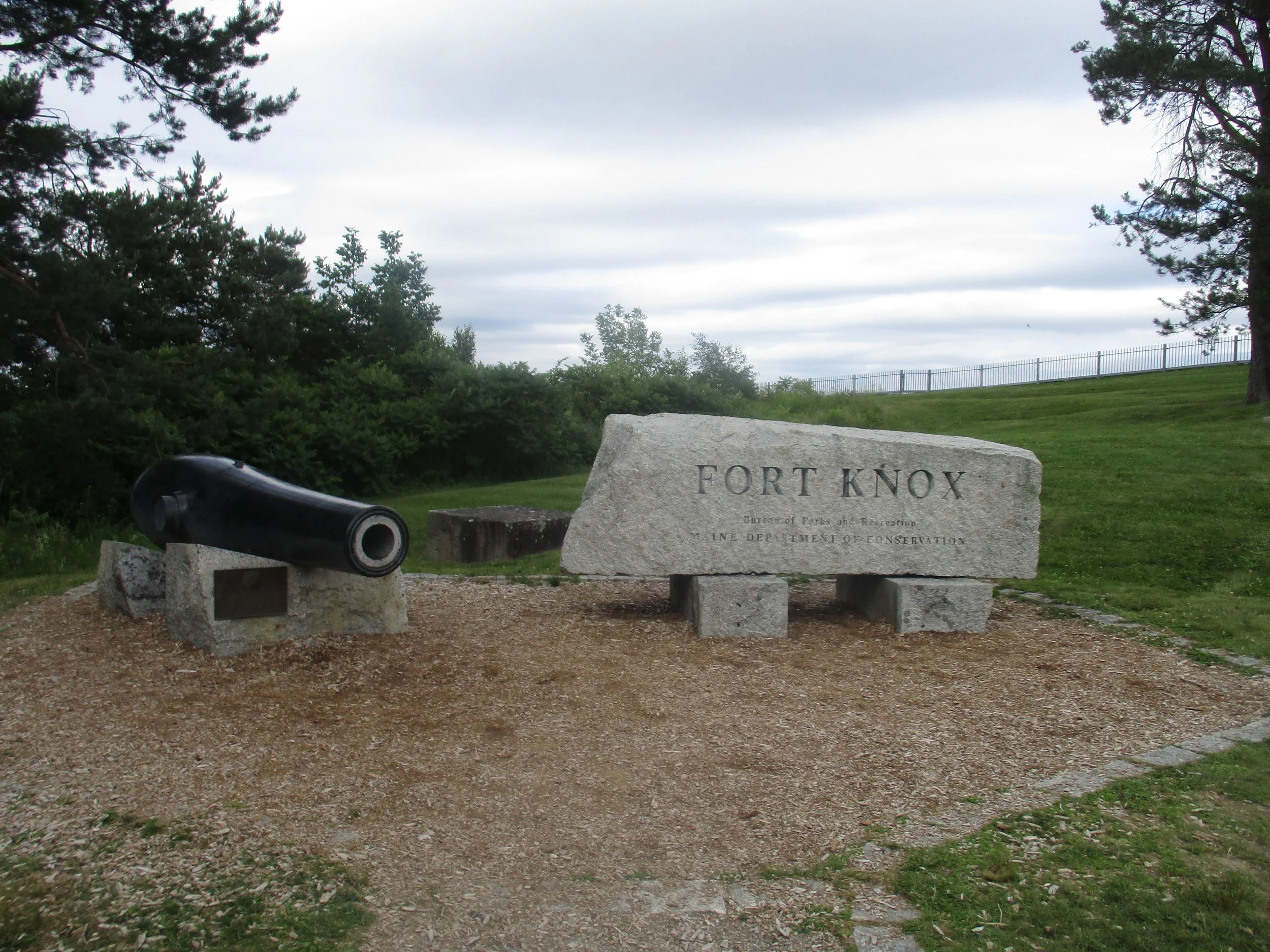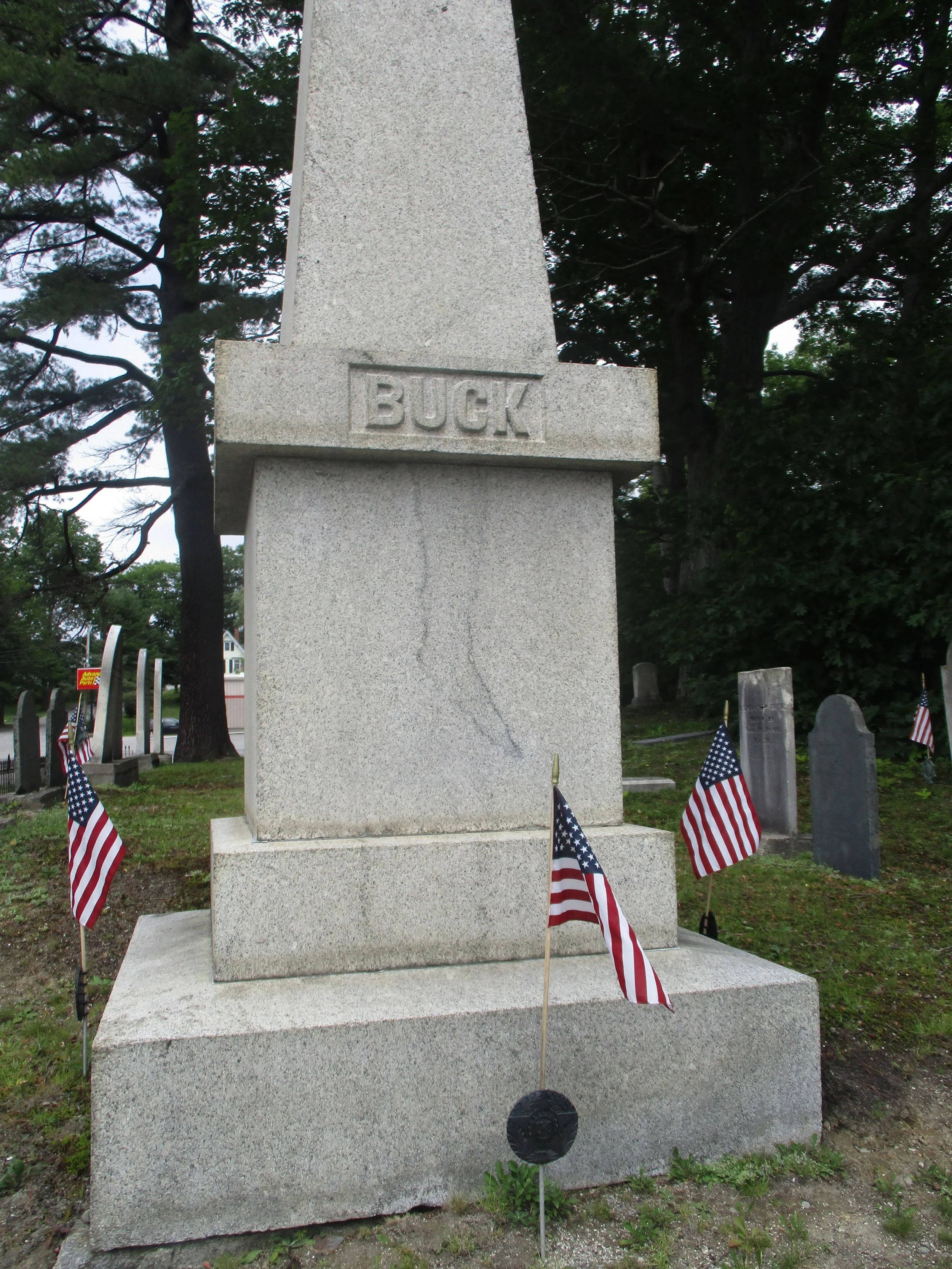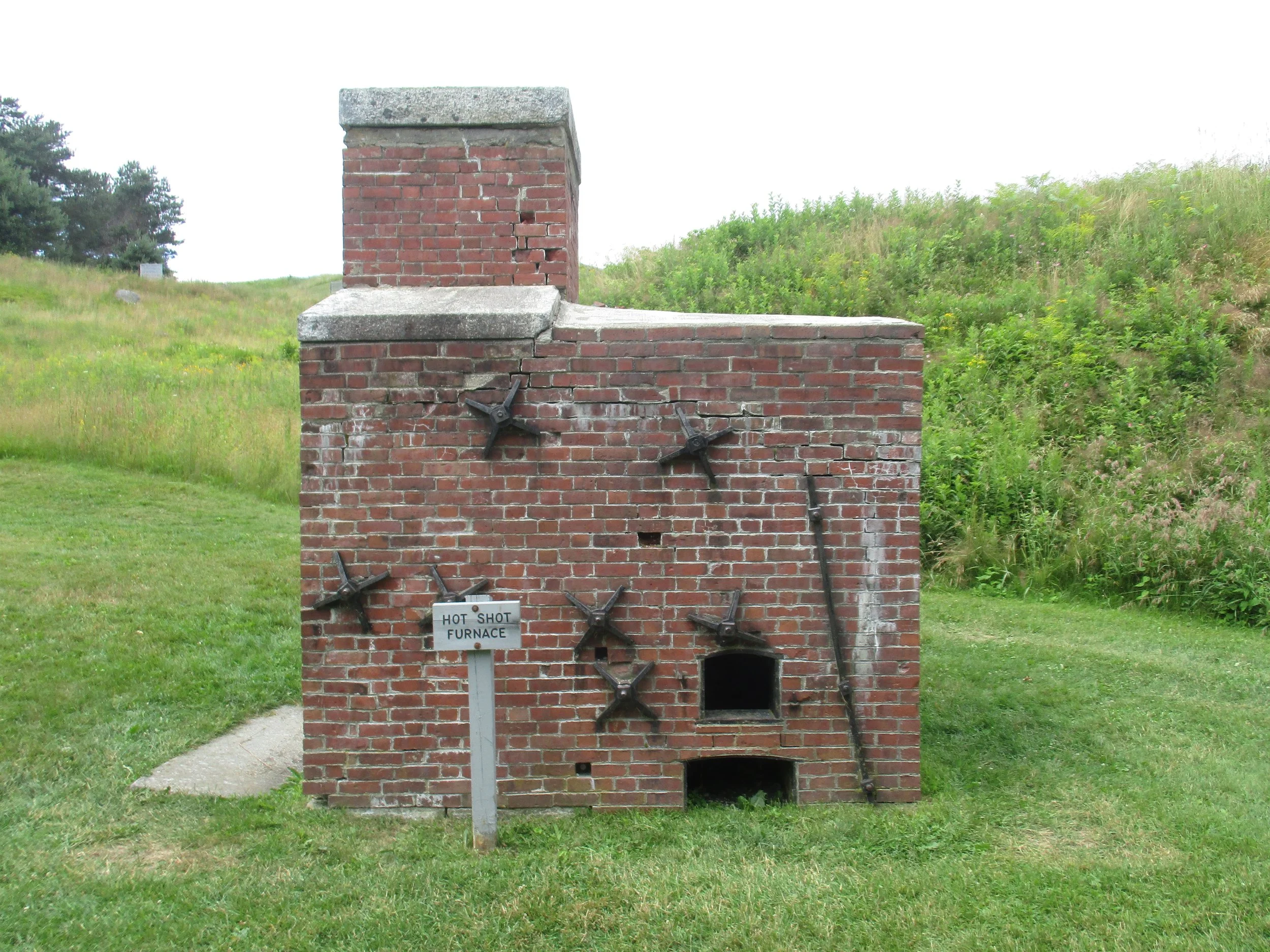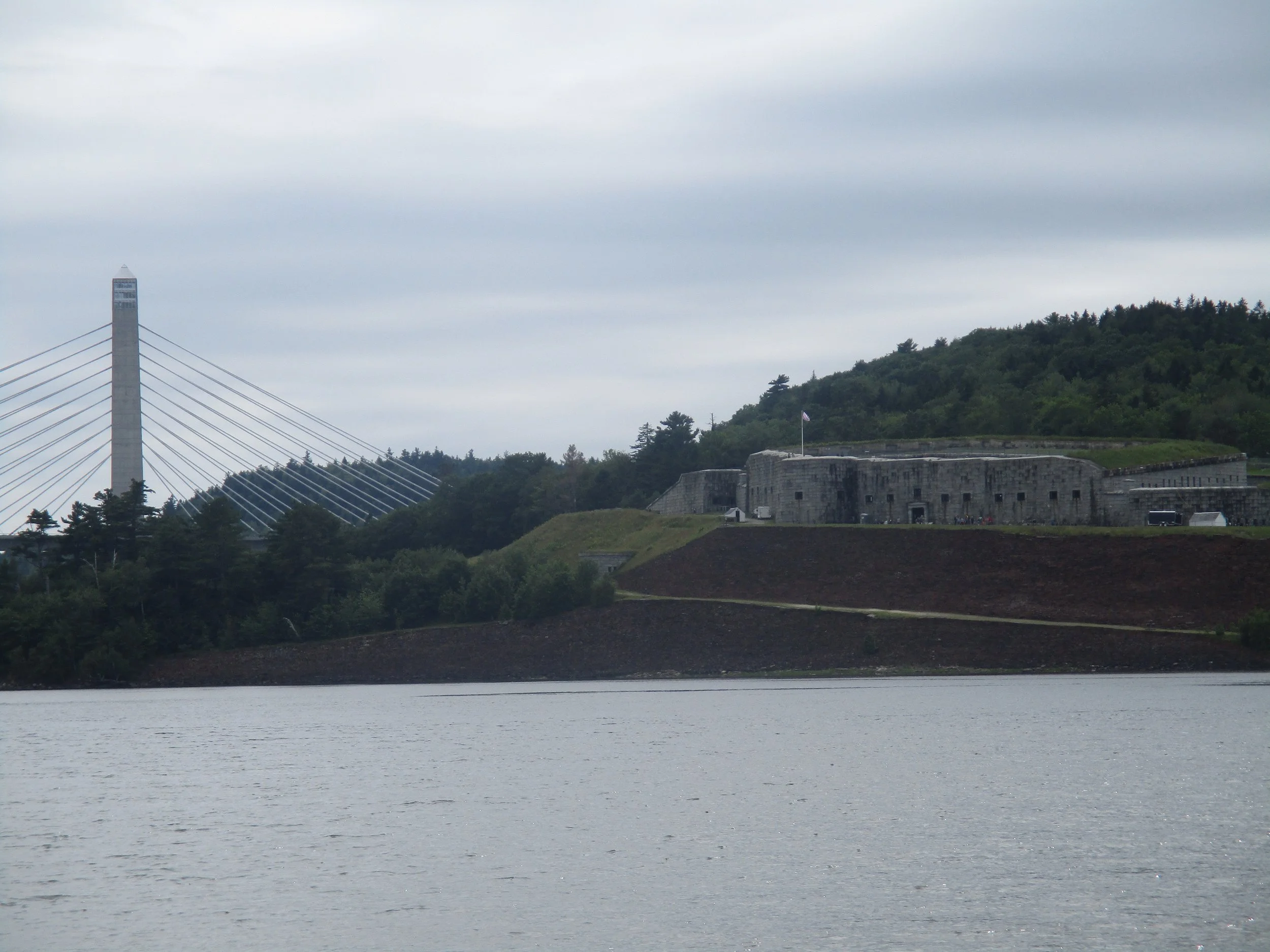Fort Knox, Maine
Fort Knox
This post was originally published July 20, 2017.
It’s been too long, I suppose, since I’ve walked down dark tunnels that were said to be filled with ghosts. While in Europe, I visited many forts and castles, and thought it best to explore a few more on this side of the pond, but before I could, I had to make one stop of Bucksport’s infamous cemetery. There, Colonel Buck, Bucksport’s namesake, was buried with a curse hanging over his grave.
Colonel Buck’s Grave
According to legend, Colonel Buck burned a witch, who warned him that he would be cursed and his grave would bear the mark of her foot for all time. As she went up in flames, her leg rolled out of the fire. When Colonel Buck died, the mark of the witch’s boot stained his tombstone, and no matter how many people tried to wash it off, it would continue to reappear. Historians say that there is no record of a witch being burned at the time, and geologists say it’s not uncommon for strange patterns to emerge in cut stone, but I think what they really meant to say is that they’re no fun.
Across the river from Colonel Buck’s tomb is Fort Knox. Though it never saw battle, it’s one of the most popular forts in the state to visit today. It seems there’s always an event there, whether it’s Pirate Day with little kids running around with swords or Shakespeare performers monologuing in the fort’s center.
The Fort has plenty of attractions to keep people coming back for more, including canons, long dark tunnels, and rumors of ghosts. In 2011, the SyFy Channel’s very own Ghost Hunters came to Fort Knox to investigate the speculated ghost activity and left believing there was real potential for it to exist. The fort capitalizes on their ghostly publicity every Halloween with their Fright at the Fort.
I’m too much of a wuss to willingly go through the fort while people are actively trying to scare me, so I visited on a bright, summer day. Maine has a history of contention with the British. In the early years, coastal towns had a power struggle with the British, who came to reclaim the land. Nearby towns faced invasions during the Revolutionary War and the War of 1812. By 1844, Fort Knox began construction to protect the Penobscot River Valley from future invasions.
I’m no expert on military forts, but Fort Knox seems like it would be a hard fort to pass. High up on the Penobscot River’s edge, the fort would be hard to reach, and any approaches from land would be impossible, as the enemy would be forced to trek through a moat surrounded by gunfire on both sides.
On the river’s side, there’s the battery, complete with a long row of cannon platforms faced towards the water and a Hot Shot Furnace, which is where soldiers can heat up cannonballs to not just sink ships but also make them catch fire. Inside the fort are the soldier’s quarters, the kitchen, storage rooms, and even more cannons. When I went, tents were set up across the lawn for the Pirate Day festivities.
Unlike the famous Fort Knox in Kentucky, there was no gold in this fort. However, connected to the fort is the tallest public bridge-observatory in the world, reaching 420 feet in the air. There you can get a bird’s eye view of the area Fort Knox was built to protect.





